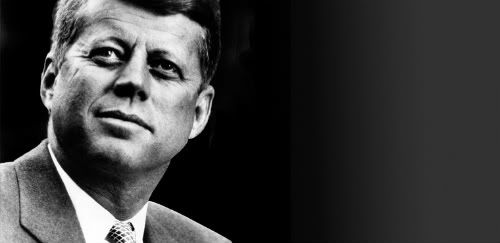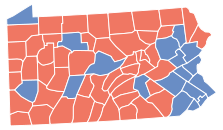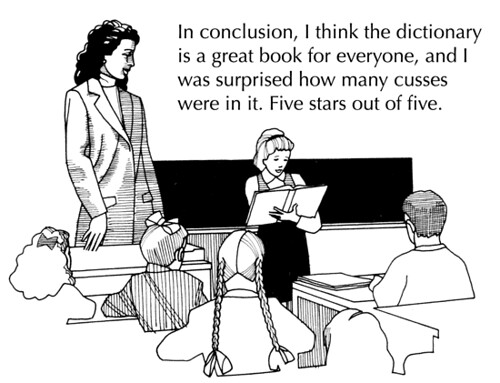Crossposted from the Worldwatch Institute’s Nourishing the Planet.
“Meet the Nourishing the Planet Advisory Group” is a regular series where we profile advisors of the Nourishing the Planet project. This week, we’re featuring David Spielman, who is a Research Fellow at the International Food Policy Research Institute (IFPRI).
 Name: David Spielman
Name: David Spielman
Affiliation: International Food Policy Research Institute (IFPRI)
Location: Addis Ababa, Ethiopia
Bio: David Spielman is a Research Fellow at the International Food Policy Research Institute (IFPRI) and is based in Addis Ababa, Ethiopia. His research agenda covers a range of topics including agricultural science, technology, and innovation policy; seed systems and agricultural input markets; and community-driven rural development. Prior to this, David worked in agriculture and rural development for the World Bank (Washington, D.C.), the Aga Khan Development Network (Pakistan), and several other organizations. His regional emphasis is on East Africa and South Asia. Spielman received a Ph.D. in Economics from American University in 2003, an M.Sc. in Development Studies from the London School of Economics in 1993, and a B.A. in International Relations from Tufts University in 1992.
Recent Publications:
• David J. Spielman et al., “Policies to promote cereal intensification in Ethiopia: A review of evidence and experience,” Food Policy, vol. 35 (2010), in press;
• Anwar Naseem; David J. Spielman, and Steven Were Omamo, “Private-sector investment in R&D: A review of policy options to promote its growth in developing-country agriculture,” Agribusiness, vol. 26, no. 1 (2010), pp. 143-73;
• David J. Spielman, Javier Ekboir, and Kristin Davis, “The art and science of innovation systems inquiry: Applications to Sub-Saharan African agriculture,” Technology in Society, vol. 31, no. 4 (2009), pp. 399-405;
• David J. Spielman and Rajul Pandya-Lorch, Millions Fed: Proven Successes in Agricultural Development (Washington, DC: IFPRI, 2009).
On Nourishing the Planet: “Nourishing the planet” means investing in growth, development, and the improvement of human livelihoods in new and more sustainable ways than what we have done in the past. This means encouraging greater innovation in how we produce food, manage our natural resources, steward our environment, and assist those least able to benefit from innovation.
What is the relationship between agriculture, the environment, and global hunger and poverty? Agriculture is a fundamental source of both sustenance and income for many of the world’s poor, whether directly or indirectly. Their long-term ability to earn a living from agriculture depends acutely on how we manage the environment that provides agriculture with its essential inputs-soil, nutrients, water, light, and so many other elements. With the world waking up to climate change, there is more recognition that agriculture and the environment are inextricably linked, and thus that our lives and livelihoods are similarly linked.
What is the role you see small-scale farmers playing in the eradication of global poverty and hunger? There are skeptics who argue that small-scale farming is not a viable livelihood option in developing countries, and that the consolidation of land holdings and the expansion of capital-intensive farming will eventually push small farmers out. Yet there is ample empirical evidence indicating that small farmers-particularly small farmers who are able to innovate, commercialize, and compete in the marketplace-have some real advantages over more corporate-style agriculture. But realistically, creating a new generation of competitive and dynamic farmers will take more investment in rural education and health services, market institutions and infrastructure, and science in the interest of the smallholder. The new generations of small farmers should not be bound to the drudgery and uncertainty of agricultural life; rather, they should be sharp, savvy farmers endowed with the skills and education needed to compete successfully.
When you met with Nourishing the Planet co-director Danielle Nierenberg in the fall of last year, you said that “farmers are now faced with decisions that it would take a Ph.D to solve,” but that there are enormous opportunities for creative innovations that can help lift farmers’ incomes, protect the environment, and increase food security. Can you provide examples of what you mean? Policymakers, administrators, and development practitioners seem to expect that farmers will readily respond to their concerns about sluggish agricultural productivity growth, rising food prices, poor household nutrition, climate change, and a host of other complex challenges. But the solutions on offer-a new cultivation practice here, a new market niche there-are not always an obvious opportunity for every farmer. The ability of a farmer to seize an opportunity-to cultivate her crops in a new way, or to sell her farm surplus in a new market-depends acutely on her sense of household security now and in the future, her perceptions of risk, and her level of education and degree of experience.
My favorite “innovation” example is conservation agriculture which, loosely defined, is a set of cultivation practices designed to improve soil fertility and water retention that depend on the adoption of closely related farming techniques-residue retention, minimum tillage, land leveling, strategic crop rotation, improved or specialized varieties, etc. The idea is to conserve the natural resource base of agricultural production while also improving yields or lowering costs for the farmer. There are a range of crop-specific technologies designed to make these approaches work (direct seeded rice, zero tillage wheat, etc.), but they are pretty complicated. I have seen it practiced in Zambia, India, and several other countries, and I take my hat off to these farmers. It doesn’t look that easy.
I’m not much of a farmer myself, but if you gave me a half hectare of land and asked me to try some of these techniques out, I would fail miserably. And even if I got the techniques right-preparing the land correctly, planting seed, managing the irrigation, and harvesting at the right time-who knows what would happen when I tried to sell my output in the market. Being a good farmer, a good agronomist, and a good businessperson all at the same time is challenging. That’s why I focus on the need for greater investment in agricultural science, rural education, and rural infrastructure, so that tomorrow’s farmers are better equipped with the skills and education needed to experiment, adapt, and ultimately, compete.
What sorts of innovations, policies, etc. would you like to see implemented to reduce global poverty and hunger? Reducing global poverty and hunger hinge on several key policies and investments. First, continued and accelerated investment in science and technology is critical. This means not only “high” science like genomics and crop genetic improvement, but also the more “day to day” science of soil fertility and water management, as well as the managerial and organizational aspects of how we actually do science.
Second, greater investment in the hardware and software of innovation are also needed. This means physical infrastructure like roads and power; market infrastructure like price information systems and laws to effectively settle commercial disputes; rural education and health services; and many other areas that are often lacking in the lives of small farmers and rural entrepreneurs.
Third, investment in communities is essential because collective action can often contribute dramatically to social and economic change. There is much to be gained from encouraging communities to identify their own development priorities, marshal their own resources to effect change, and act as independent but constructive partners to both state and non-state actors.
Can you describe the Millions Fed project and your involvement? “Millions Fed: Proven Successes in Agricultural Development” is a project that examines “what works” in agricultural development-what types of programs, policies, and investments have had a proven impact on hunger and food security. The project looks at 20 proven successes in Africa, Asia, and Latin America during the last 50 years that have played an important role in reducing the proportion of people suffering from malnutrition from about one-third to one-sixth of the world’s population. The project, commissioned by the Bill & Melinda Gates Foundation, was undertaken by the International Food Policy Research Institute (IFPRI) in 2008-09.
Our flagship output from this project is a book by the same title. The book-along with the website, video, booklets, technical papers, and seminar presentations-has helped inform the debate on the future of the global food and agriculture system by focusing attention on large-scale successes that have had a demonstrated impact on hunger and food security, and on the importance of accumulating real evidence on where, why, and how interventions succeeded.
Can you discuss the relationship-if you think there is one-between food consumers in the United States and global hunger? Increasingly, consumers in both industrialized and developing countries are driving the choices that farmers in developing countries make. About 30 years ago, this was not necessarily the case, as policymakers with food self-sufficiency targets, local administrators with subsidized inputs, or scientists with new plant varieties held sway. Of course, this shift to a more consumer-driven global system offers many opportunities. Think about the small farmer in Tanzania who is able to make good money producing organic green beans for export to Europe, or the small farmer in India who is enjoying high returns on his mango and grape exports to the Middle East.
But I often wonder whether there is a need for us to cautiously interpret the gains associated with the expansion of this global system. The natural skeptic in me would ask whether we are simply replacing cacao, tea, rubber, and other colonial cash crops with pesticide-free strawberries, shade-grown coffee, or organic broccoli for wealthy consumers in industrialized countries. The economist in me would ask whether poverty reduction and global hunger can be effectively reduced by these products (and interventions to promote these products), or whether there are better uses of our scarce resources.
In some countries such as Ethiopia, research shows that greater poverty reduction can be achieved by investing in the improvement of food staple and livestock productivity. Although this doesn’t preclude investment in high-value export crops, it should be a warning message to policymakers and development practitioners who are overly enamored with the idea that quaint fruits, organic vegetables, or pretty flowers will end poverty.
Why should food consumers in the United States care about the state of agriculture in other countries? During my undergraduate studies, I had an international relations professor who published extensively on the theory of deterrence and mutually assured destruction-key principals during the Cold War. But recognizing that the Berlin Wall was falling at the same time as he was lecturing, he talked a bit about interdependence-the idea that the security of all countries would depend not on rival military might, but on the depth of their economic and social relationships. I think we are moving closer and closer to a tightly interdependent world. This means that food consumers in the United States need to care more about the state of the world because their choices at the supermarket, in the kitchen, and in the voting booth affect the livelihoods of millions beyond their borders.
Thank you for reading! If you enjoy our diary every day we invite you to get involved:
1. Comment on our daily posts — we check for comments everyday and want to have a regular ongoing discussion with you.
2. Receive regular updates–Join the weekly BorderJumpers newsletter by clicking here.
3. Help keep our research going–If you know of any great projects or contacts in West Africa please connect us connect us by emailing, commenting or sending us a message on facebook.
 One of the first things you notice about grocery stores in Zambia is the plethora of processed foods from around the world, from crackers made in Argentina and soy milk from China to popular U.S. breakfast cereals. Complementing these foreign foods, however, are a variety of locally made and processed products, including indigenous varieties of organic rice, all-natural peanut butter, and honey from the It’s Wild brand.
One of the first things you notice about grocery stores in Zambia is the plethora of processed foods from around the world, from crackers made in Argentina and soy milk from China to popular U.S. breakfast cereals. Complementing these foreign foods, however, are a variety of locally made and processed products, including indigenous varieties of organic rice, all-natural peanut butter, and honey from the It’s Wild brand. Hello readers of Basil Magazine!
Hello readers of Basil Magazine!


 Name: David Spielman
Name: David Spielman